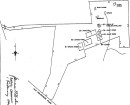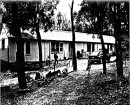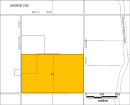Back to search results
MURRAYVILLE RAILWAY STATION
MCKENZIE STREET MURRAYVILLE, MILDURA RURAL CITY
MURRAYVILLE RAILWAY STATION
MCKENZIE STREET MURRAYVILLE, MILDURA RURAL CITY
All information on this page is maintained by Heritage Victoria.
Click below for their website and contact details.
Victorian Heritage Register
-
Add to tour
You must log in to do that.
-
Share
-
Shortlist place
You must log in to do that.
- Download report
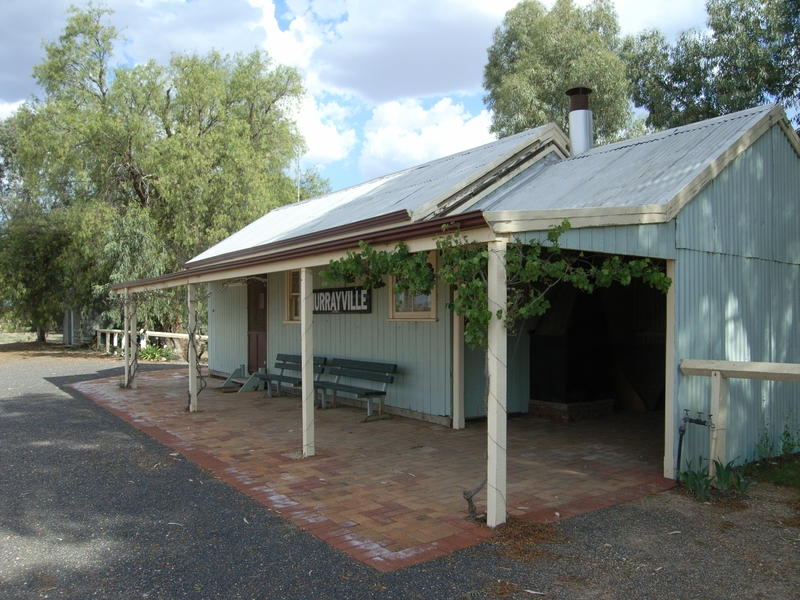
MURRAYVILLE RAILWAY STATION SOHE 2008

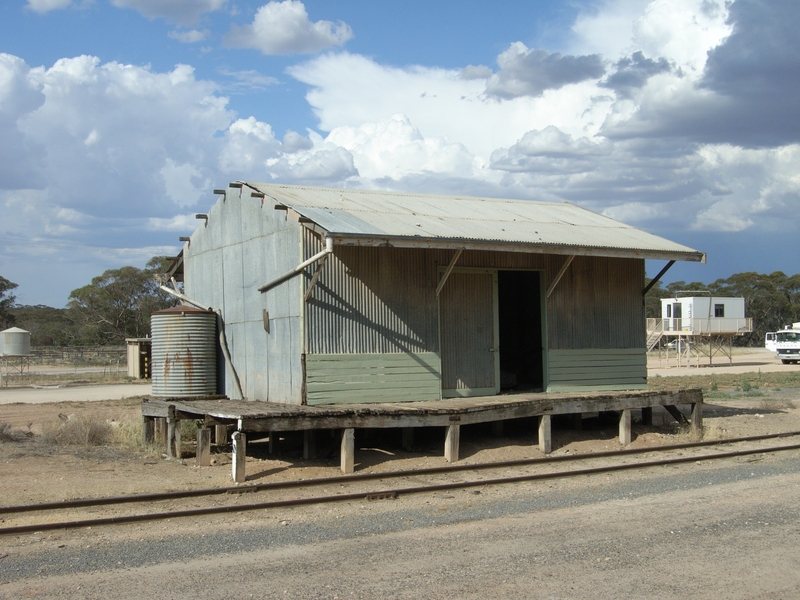






On this page:
Statement of Significance
What is significant?
Murrayville Railway Station was constructed in 1912 on the Ouyen-Pinaroo line for the Victorian Railways. It comprises a standard, single storey, timber weatherboard, portable station building with ventilated double gable roof and an attached waiting area. Other structures include; the corrugated iron clad goods shed and two van goods sheds. The water tower, toilet shed and store to the station platform have been demolished, while a loading ramp and a set of railway tracks have also been removed. The station buildings are currently leased by the local shire council.
How is it significant?
Murrayville Railway Station is historically and architecturally significant to the State of Victoria.
Why is it significant?
Murrayville Railway Station is historically significant as an example of a station built for the extension of the railway network into the Mallee and Wimmera regions.
Murrayville Railway Station is architecturally significant as the first of a series of thirty-seven timber stations built in Victoria in the early years of the twentieth century. These stations, being of a rectangular plan, were designed to allow for future extension along the main axis. The ventilated roof is representative of Wimmera/Mallee construction and is an example of the 'Type A' standard portable design. (Beeston, 1995).
Murrayville Railway Station was constructed in 1912 on the Ouyen-Pinaroo line for the Victorian Railways. It comprises a standard, single storey, timber weatherboard, portable station building with ventilated double gable roof and an attached waiting area. Other structures include; the corrugated iron clad goods shed and two van goods sheds. The water tower, toilet shed and store to the station platform have been demolished, while a loading ramp and a set of railway tracks have also been removed. The station buildings are currently leased by the local shire council.
How is it significant?
Murrayville Railway Station is historically and architecturally significant to the State of Victoria.
Why is it significant?
Murrayville Railway Station is historically significant as an example of a station built for the extension of the railway network into the Mallee and Wimmera regions.
Murrayville Railway Station is architecturally significant as the first of a series of thirty-seven timber stations built in Victoria in the early years of the twentieth century. These stations, being of a rectangular plan, were designed to allow for future extension along the main axis. The ventilated roof is representative of Wimmera/Mallee construction and is an example of the 'Type A' standard portable design. (Beeston, 1995).
Show more
Show less
-
-
MURRAYVILLE RAILWAY STATION - History
Murrayville Railway Station is historically significant as an example of a station built for the extension of the railway network into the Mallee and Wimmera regions in the early years of the twentieth century. This was a period marked by heavy budget restrictions and increased restraints on station building design. (Ward, 1982)
The subsequent development of the region through the rail network enabled substantial harvests to be yielded from the formerly unproductive land and transported to Melbourne. (Beeston, 1995)MURRAYVILLE RAILWAY STATION - Permit Exemptions
General Exemptions:General exemptions apply to all places and objects included in the Victorian Heritage Register (VHR). General exemptions have been designed to allow everyday activities, maintenance and changes to your property, which don’t harm its cultural heritage significance, to proceed without the need to obtain approvals under the Heritage Act 2017.Places of worship: In some circumstances, you can alter a place of worship to accommodate religious practices without a permit, but you must notify the Executive Director of Heritage Victoria before you start the works or activities at least 20 business days before the works or activities are to commence.Subdivision/consolidation: Permit exemptions exist for some subdivisions and consolidations. If the subdivision or consolidation is in accordance with a planning permit granted under Part 4 of the Planning and Environment Act 1987 and the application for the planning permit was referred to the Executive Director of Heritage Victoria as a determining referral authority, a permit is not required.Specific exemptions may also apply to your registered place or object. If applicable, these are listed below. Specific exemptions are tailored to the conservation and management needs of an individual registered place or object and set out works and activities that are exempt from the requirements of a permit. Specific exemptions prevail if they conflict with general exemptions. Find out more about heritage permit exemptions here.Specific Exemptions:General Conditions
1. All alterations are to be planned and carried out in a manner that prevents damage to the fabric of the registered place or object.
2. Should it become apparent during further inspection or the carrying out of alterations that original or previously hidden or inaccessible details of the place or object are revealed which relate to the significance of the place or object, then the exemption covering such alteration shall cease and the Executive Director shall be notified as soon as possible.
3. If there is a conservation policy and plan approved by the Executive Director, all works shall be in accordance with it.
4. Nothing in this declaration prevents the Executive Director from amending or rescinding all or any of the permit exemptions.
5. Nothing in this declaration exempts the owners or their agents from the responsibility to seek relevant planning or building permits from the responsible authority where applicable.
* All basic refurbishment works including repairs to buildings and structures, where works are documented and administered by a recognised conservation consultant.
* Installation of perimeter fencing.
* Modification and replacement of tracks to the extent of the rails, sleepers and ballast.
* Installation of new landscaping features but excluding earthworks where more than 1m3 of ground is to be altered.
Station Buildings
Exterior
*Replacement of decayed fabric with fabric that matches the original design and profile.
* Installation of new but not removal of existing original significant signage.
* Installation of temporary protective hoardings, screens and the like for the protection against intrusion of vandals and the like provided that no damage is sustained to significant fabric.
* Installation of new damp proofing and making good to match existing, adjacent surfaces.
Interior
* Interior painting but not stripping of existing paint scheme.
* Installation of new but not removal of existing original significant carpets/flexible floor coverings.
* Installation of new but not removal of existing original significant fixtures and fittings, including clocks, soft furnishings including curtain tracks, rods, blinds and other window dressings, and the like.
* Installation of new but not the removal of existing original significant signage.
* Installation of new partitions provided that no damage is sustained to significant fabric.
* Replacement of non-original kitchen and toilet fixtures provided that no damage is sustained to significant fabric.
* Installation of insulation to ceiling spaces.
* Installation of hooks, nails and other devices for the hanging of paintings, mirrors and other wall mounted works of art.MURRAYVILLE RAILWAY STATION - Permit Exemption Policy
The purpose of the permit exemptions is to allow works that do not impact on the significance of the place to occur without the need for a permit. The Murrayville Railway Station is important for its individual buildings and structures as well as its precinct values. The exterior of the buildings are of prime importance as is the relationship between the structures. The interiors are important if original fittings and fixtures still survive. Track works and maintenance to the buildings are able to be undertaken without a permit.
-
-
-
-
-
FORMER MURRAYVILLE CONSOLIDATED SCHOOL
 Victorian Heritage Register H1185
Victorian Heritage Register H1185 -
Murrayville Honour Roll
 Vic. War Heritage Inventory
Vic. War Heritage Inventory -
Murrayville Honour Roll (Second World War)
 Vic. War Heritage Inventory
Vic. War Heritage Inventory
-
'NORWAY'
 Boroondara City
Boroondara City -
1 Mitchell Street
 Yarra City
Yarra City
-
-







